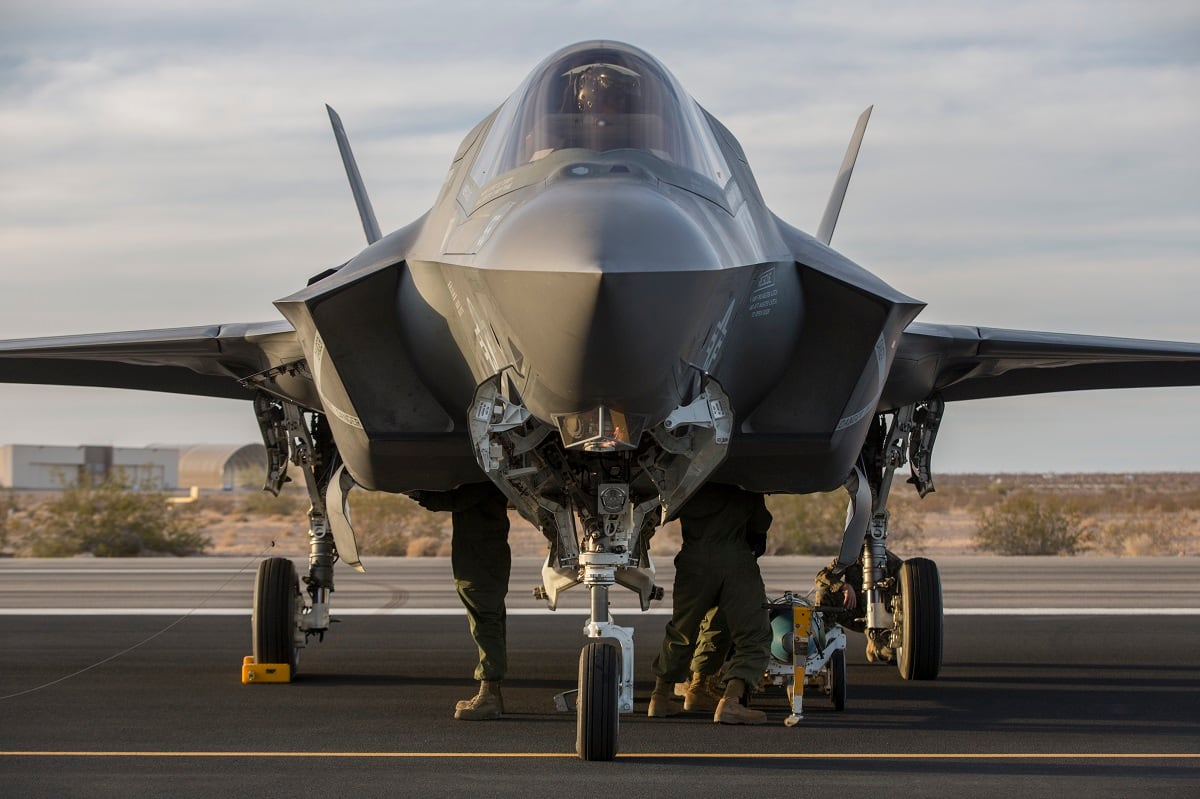WASHINGTON — If the Pentagon wants to decrease F-35 sustainment costs, it needs to make sure it gets its new software modernization strategy right, the Air Force’s new acquisition executive said Friday.
As the former head of the Defense Department’s Strategic Capabilities Office, Will Roper made a name for himself by pushing innovative new uses of existing tech, charting near term successes with swarming Perdix drones and other projects.
But since his confirmation hearing in front of Senate lawmakers in January, Will Roper has made clear that one of his priorities will be driving down the price of maintaining the F-35 joint strike fighter.
Now about 50 days into his new job as the Air Force’s assistant secretary for acquisition, technology and logistics, Roper believes software is key to doing just that, he told reporters during a roundtable discussion on Friday.
“A lot of the sustainment challenges would be solved if you do the software correctly, because the predictive maintenance happens via software,” he said. “The supply chain management happens via software. So it’s kind of like if you could solve this one thing, the dominoes would fall over and the world would be better.”
RELATED

Roper’s thinking is thus: Predictive maintenance could significantly drive down sustainment costs, especially if the department utilizes new technologies that help it pinpoint exactly when maintenance should be done on the jet. That saves both time and money, as parts theoretically could be replaced when their life is depleted but before they fail.
In a long-term sense, the department may be able to make artificial intelligence and 3D printing cornerstones of its preventative maintenance toolkit, Roper said.
But in the near term, it should focus on improving the software across the F-35 enterprise as it moves into the Block 4 modernization program, which now includes an agile software effort called Continuous Capability Development and Delivery or C2D2.
“Your litmus test — and this something [where] we’ve got some more thinking to do, but this is where my thoughts are now — is that we have Block 4 coming up. And it’s very important that we can do agile software development to achieve Block 4. So we should probably think about doing some pathfinders on agile software development on software prior to Block 4,” he said.
“And if we’re worried about sustainment, and we are, some things on the maintenance side of the house would be good places to begin. Things like ALIS [Autonomic Logistics Information System, the F-35’s sustainment system] or the mission data files are things we can work on to prove to ourselves that we really can do this drop of software every couple weeks or couple of months and sustain that over time.”
Roper added that the Defense Department doesn’t have the “I’s dotted or the T’s crossed” on such an effort and that a software pathfinder has not been approved yet by the F-35 joint program office, which is responsible for the C2D2 effort.
“As the service acquisition executive I am actively looking at opportunities to tackle this development, working those with the program executive office,” Roper said.
Improving ALIS would be no easy task. The Lockheed Martin-designed system was devised to allow operators to do mission planning, order spare parts, do after action reviews, walk maintainers through repair jobs and store all the plane’s technical data.
But the software is still unfinished, and F-35 maintainers have complained about numerous deficiencies that cause them, oftentimes, to work around the system to execute tasks.
Roper pointed out that, as the Air Force is just one of three U.S. customers for the joint strike fighter, he doesn’t have sole control over the program. The F-35 joint program executive officer is charged with leading the execution of the program, and Ellen Lord, the Pentagon’s top acquisition official, is the milestone decision authority.
So where can the Air Force help? Maybe it’s by lending expertise to the C2D2 effort, Roper said.
“Where I find software talent in the Air Force—and I have found some, it’s not as broad as I would like, but I’m trying to make sure that this talent is available on this pathfinder software activity.”
One of those places is Hanscom Air Force Base in Massachusetts, where the program executive office for battle management “is doing some great software development,” he said. “I’m looking at them and thinking, all right, I have a small group of people who are doing software well. How do I get that knowledge everywhere?”
Valerie Insinna is Defense News' air warfare reporter. She previously worked the Navy/congressional beats for Defense Daily, which followed almost three years as a staff writer for National Defense Magazine. Prior to that, she worked as an editorial assistant for the Tokyo Shimbun’s Washington bureau.






